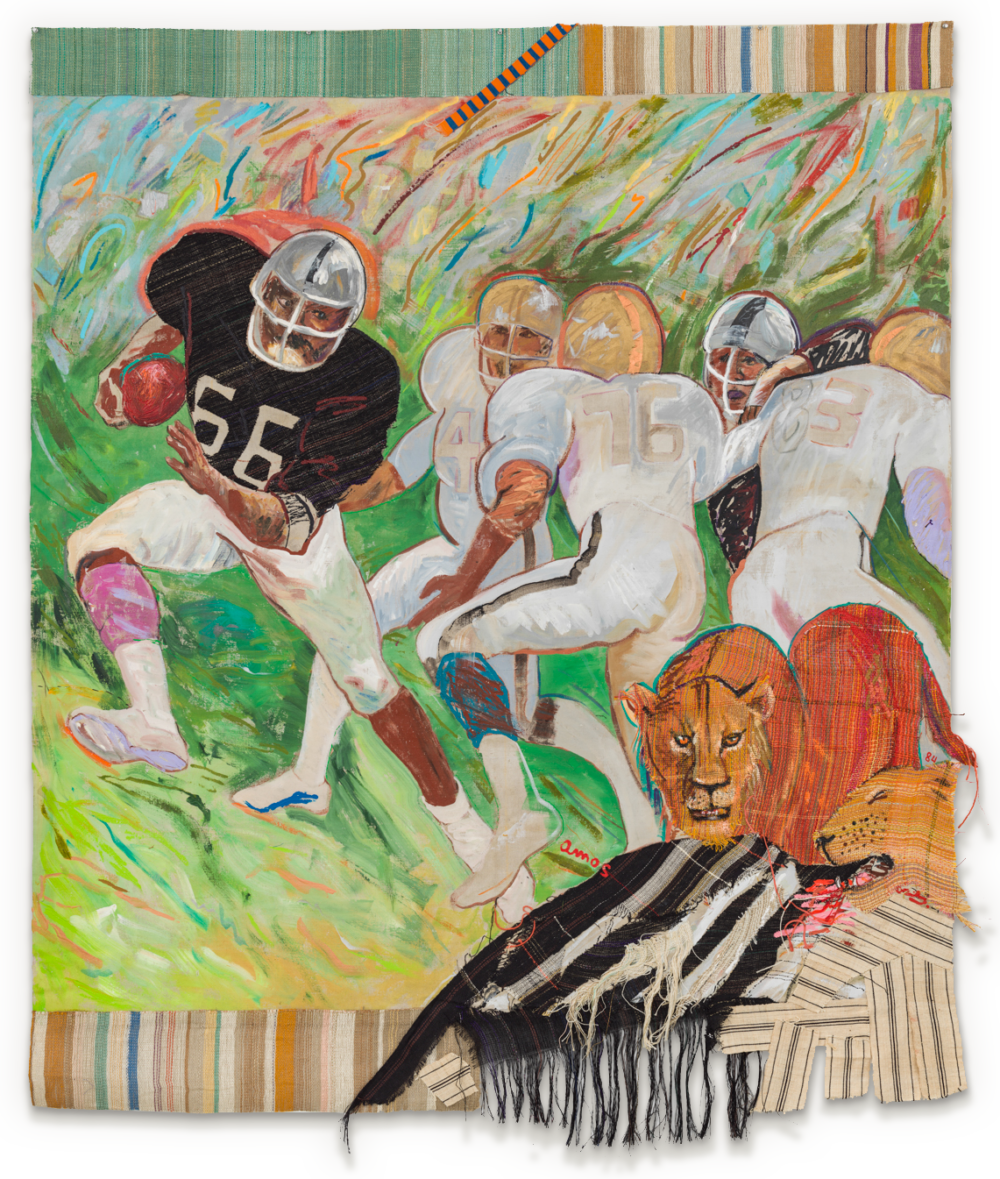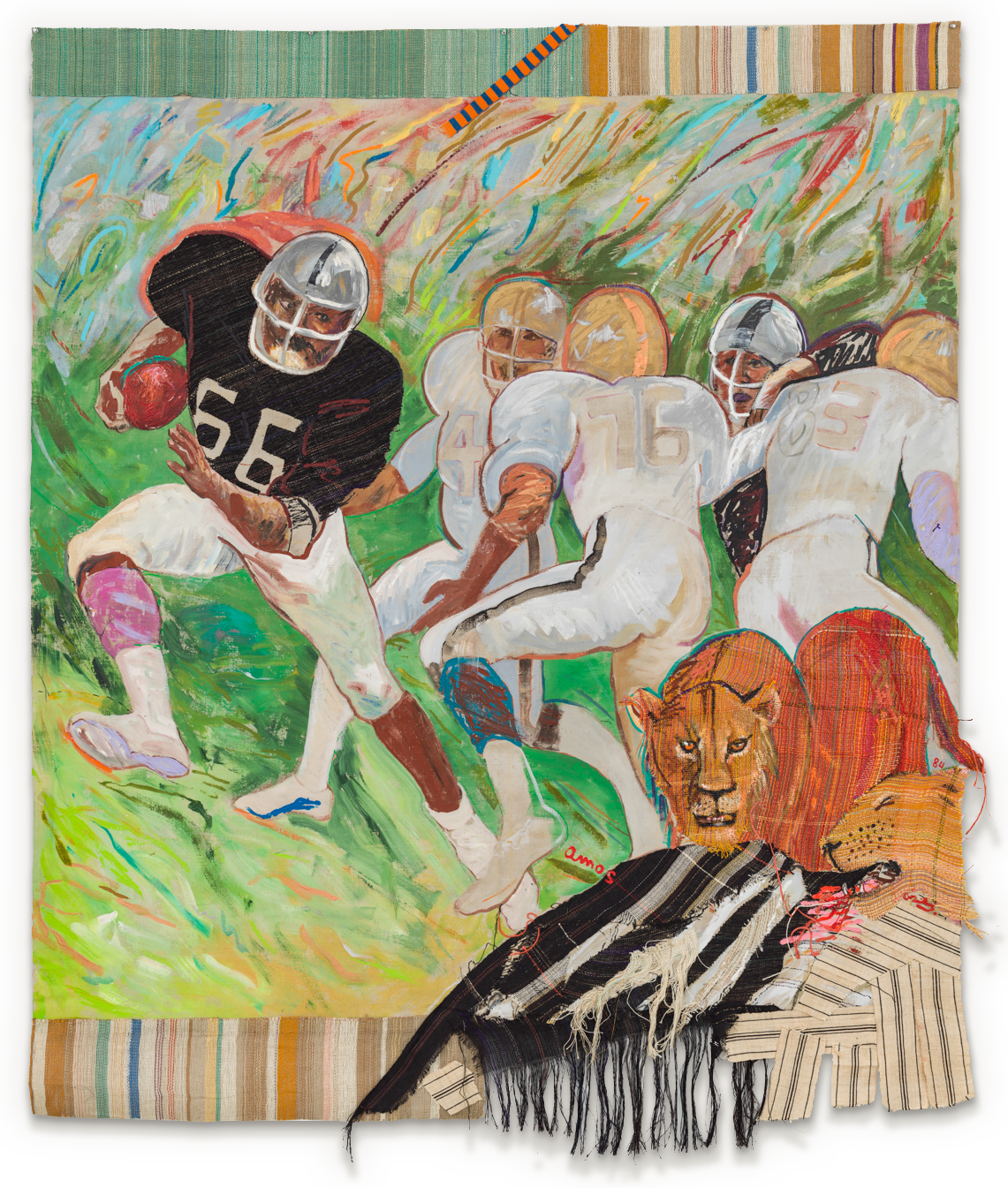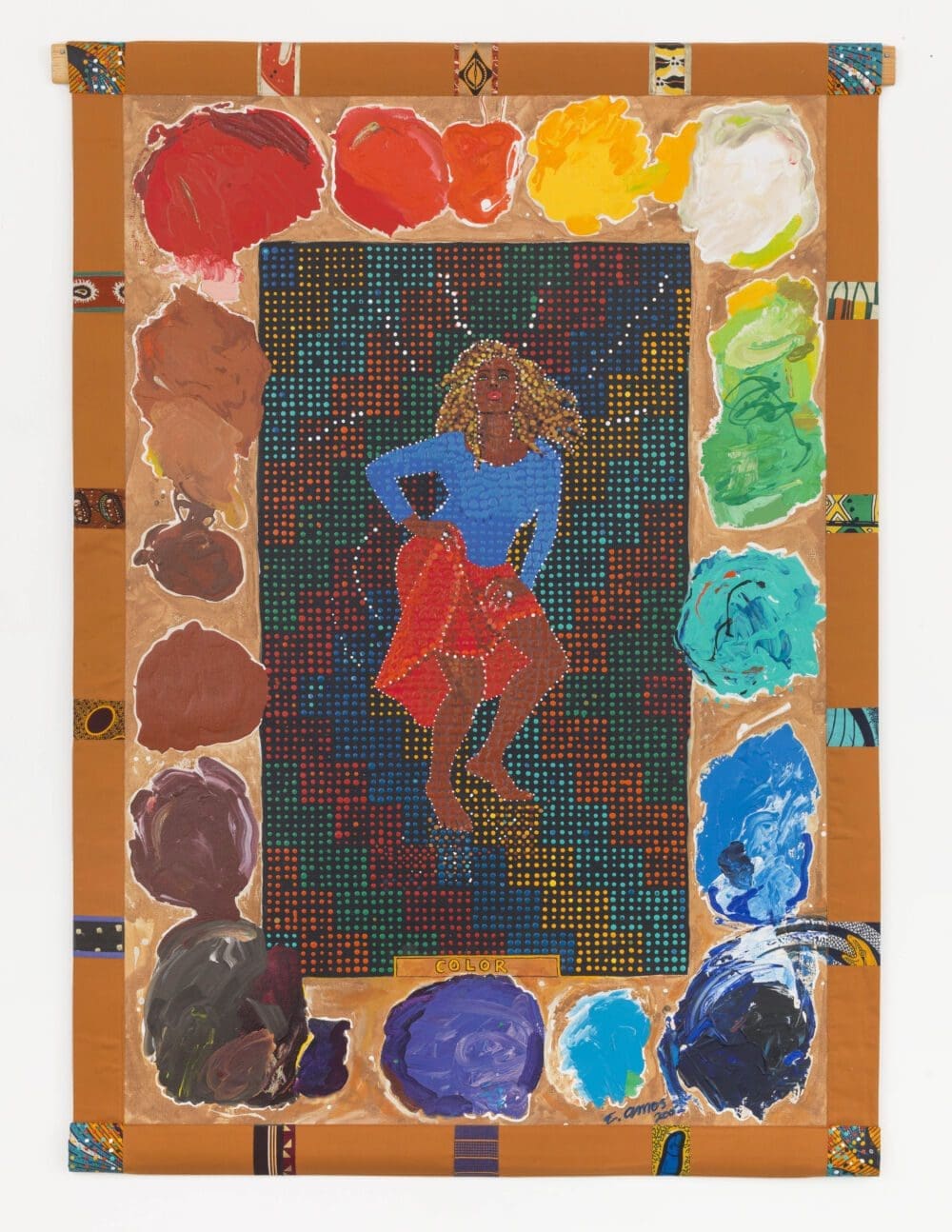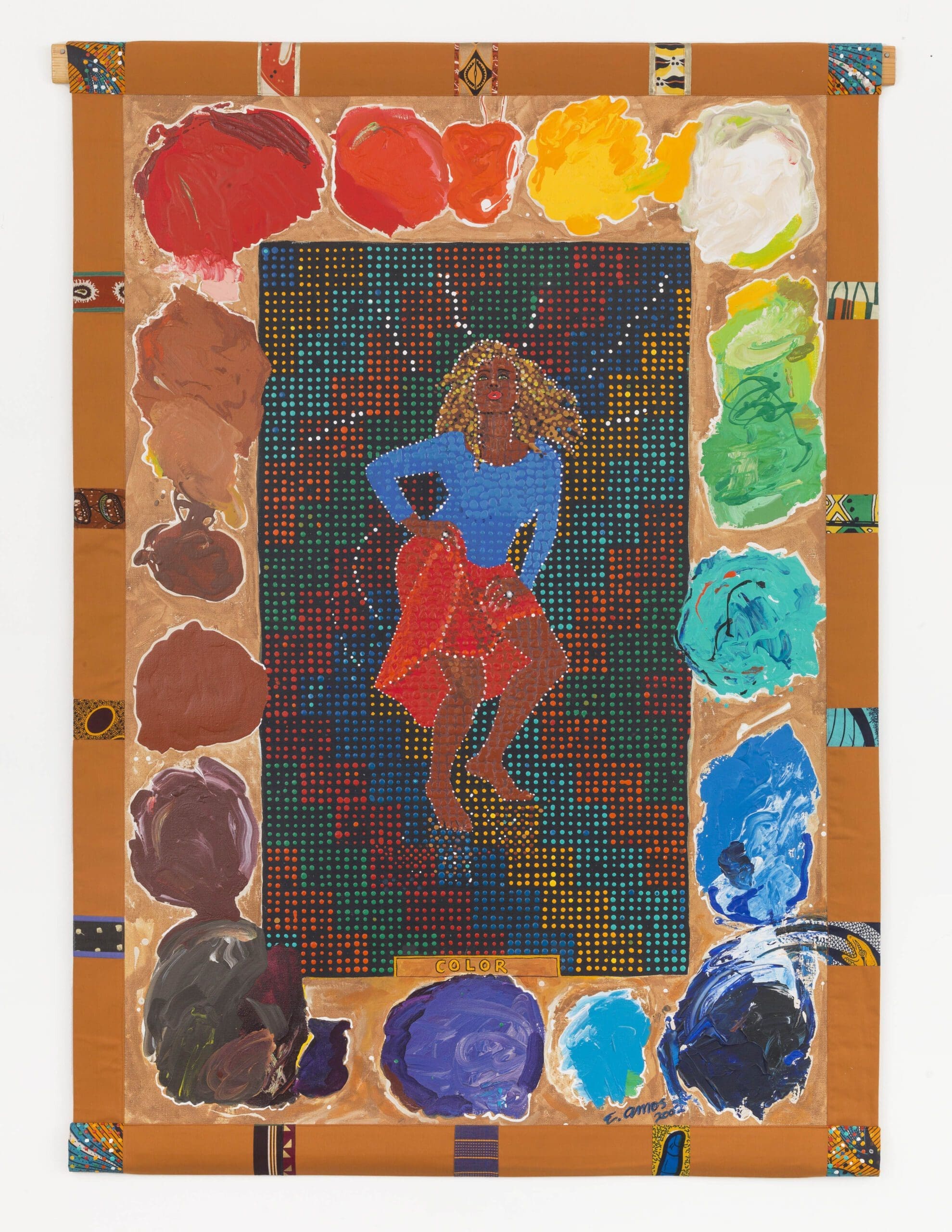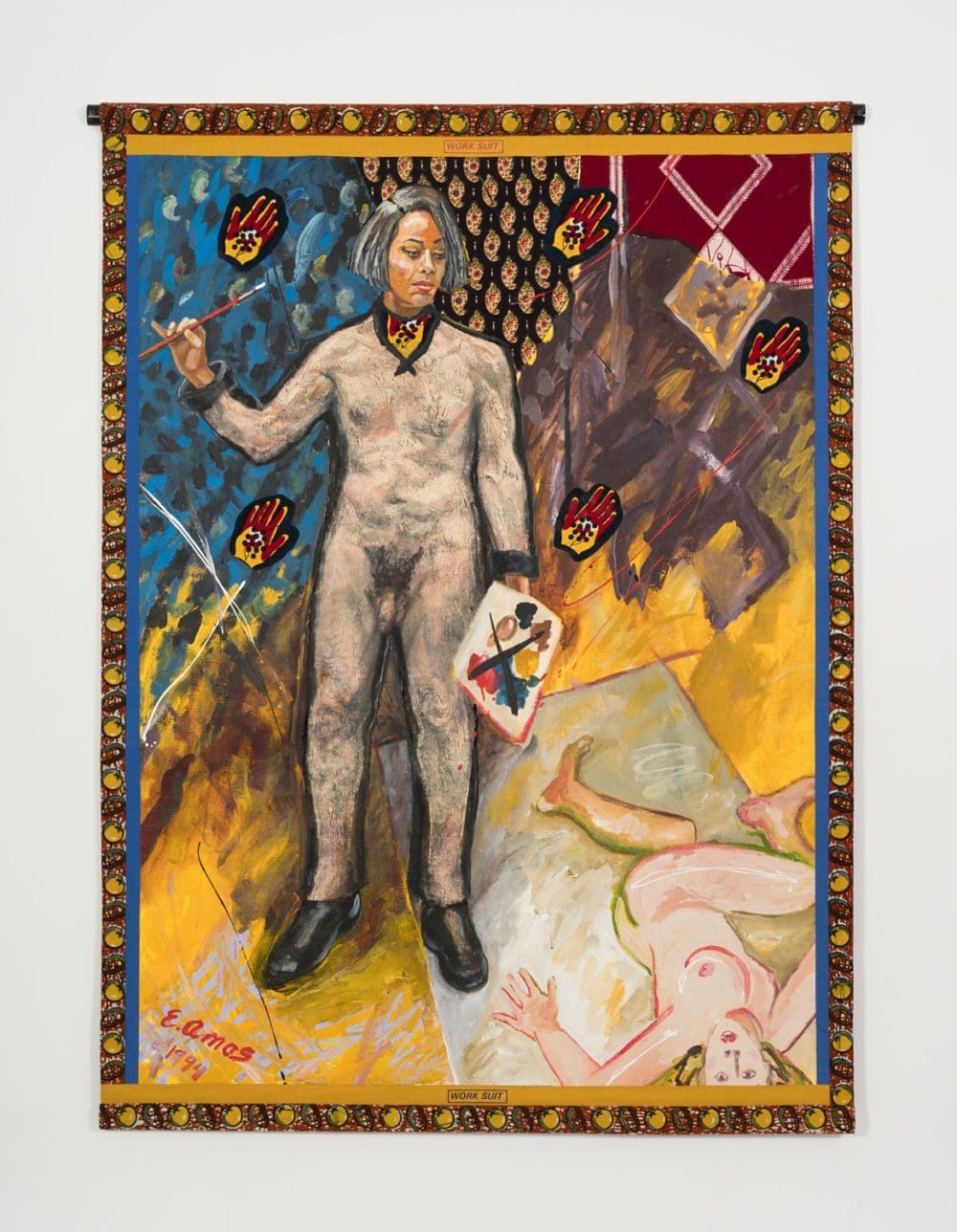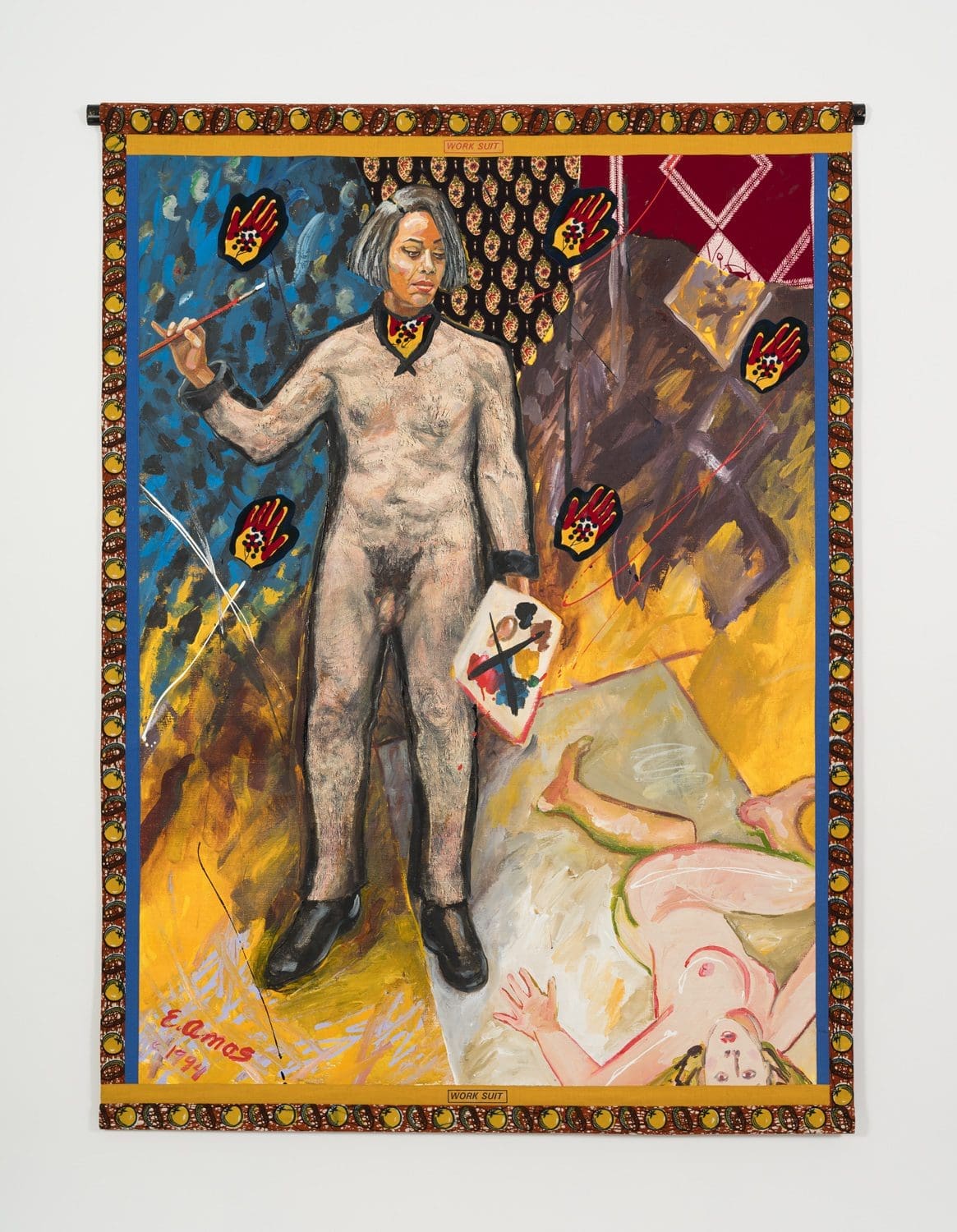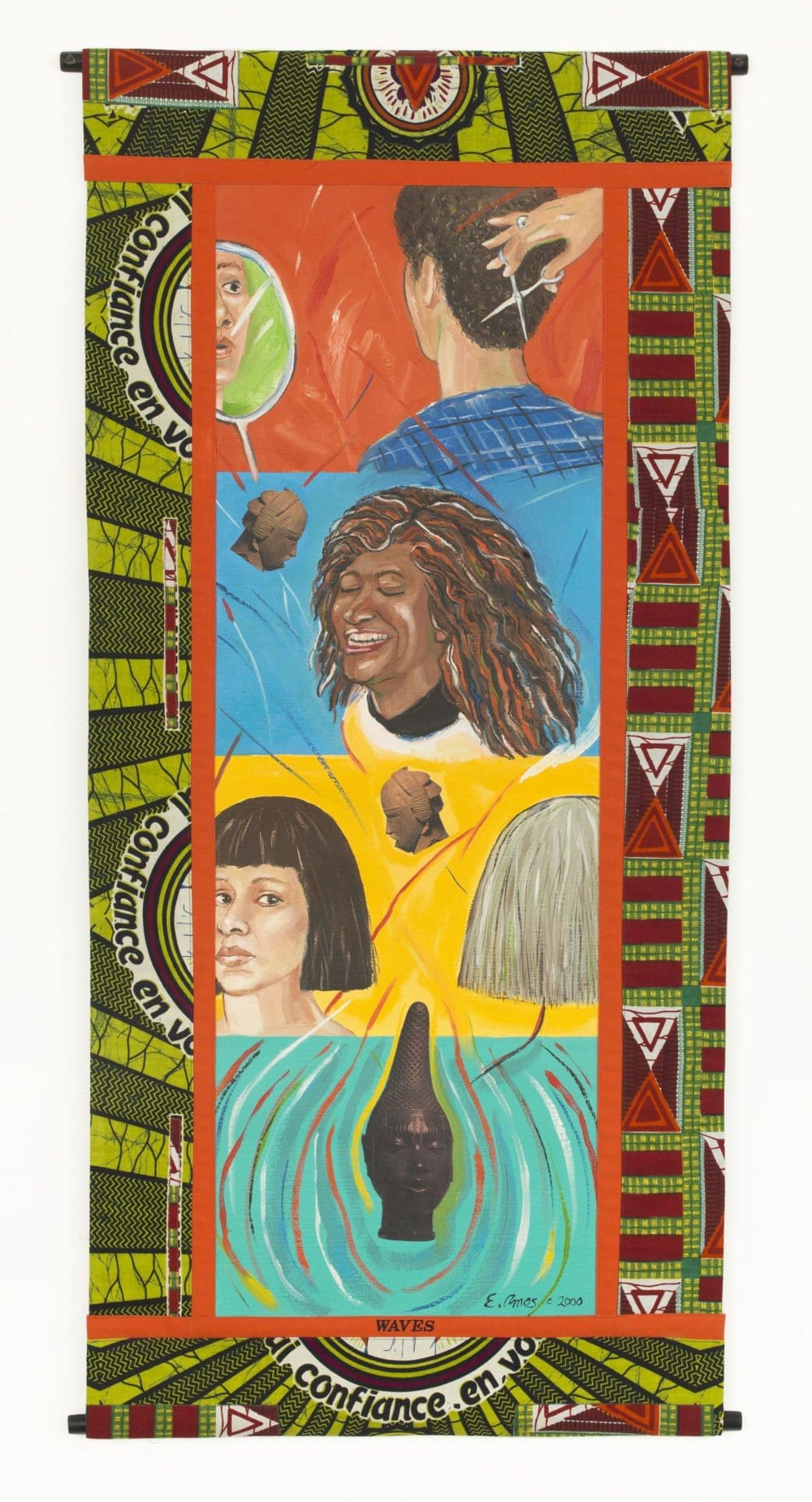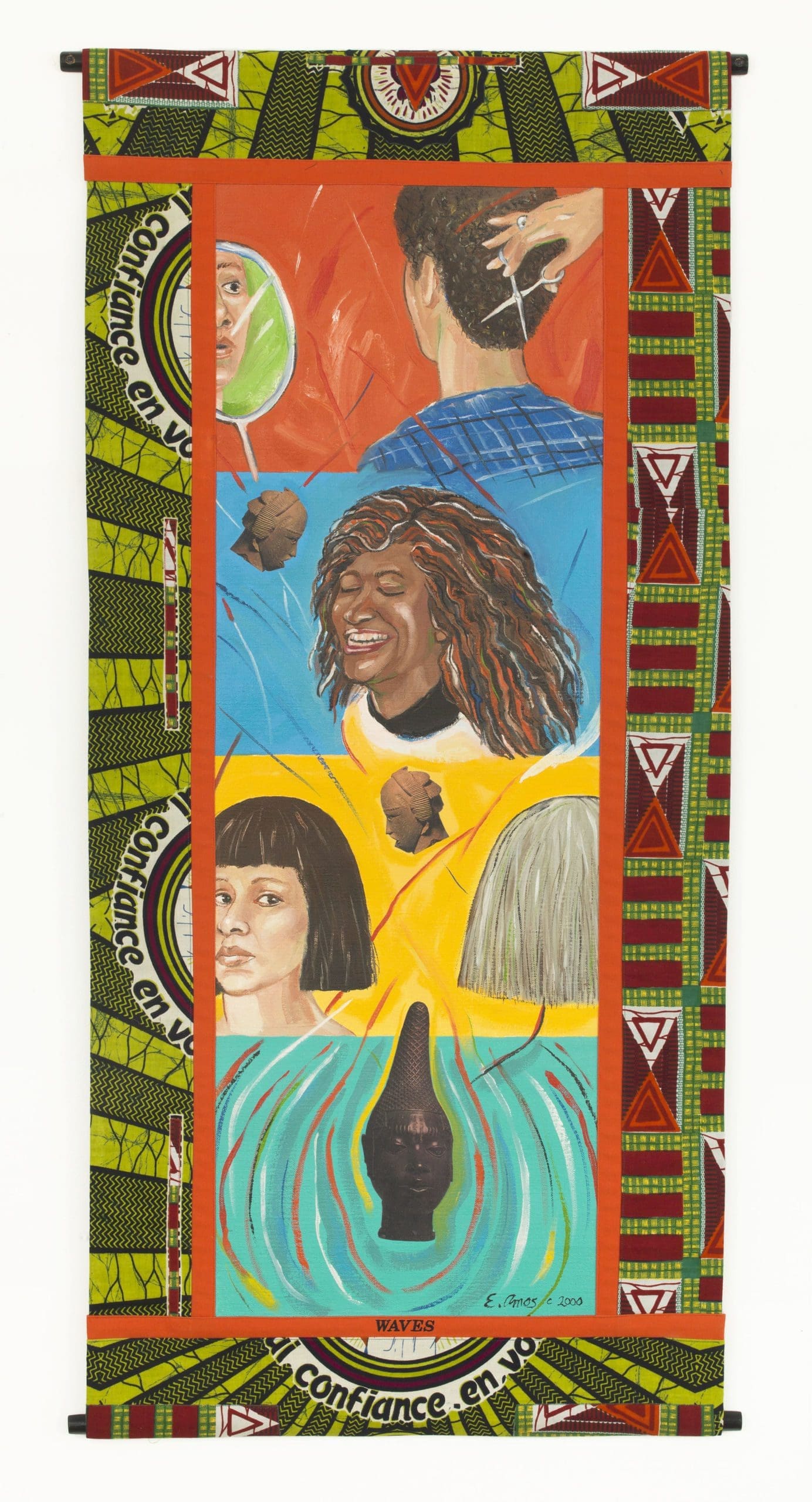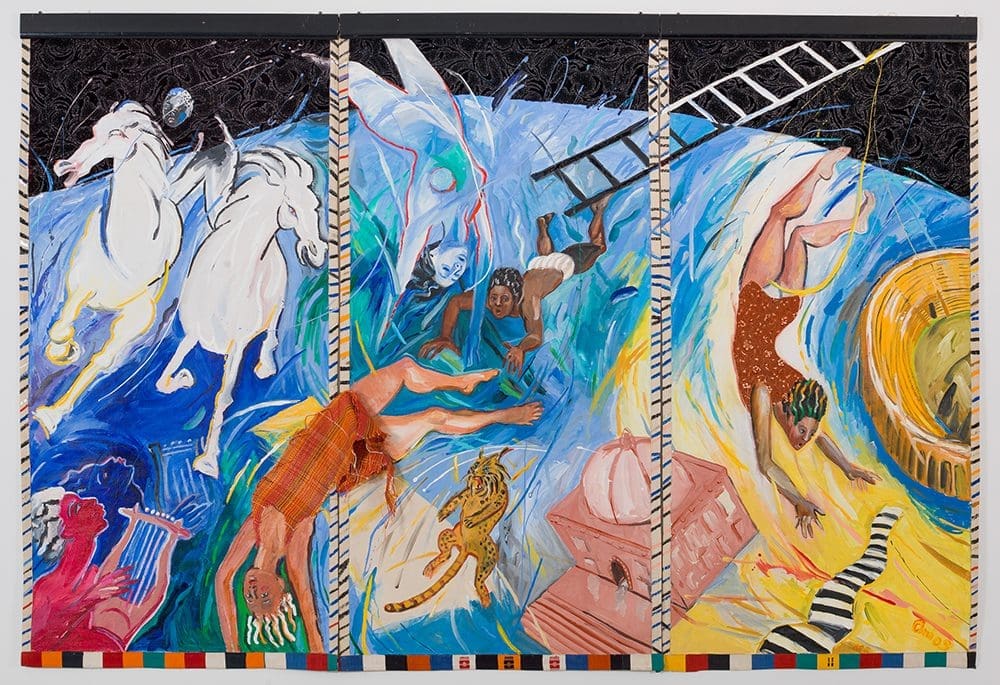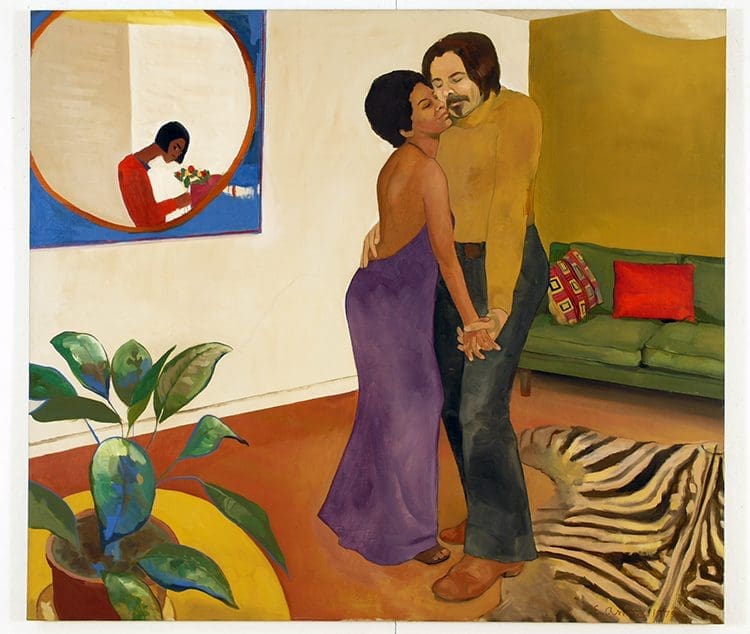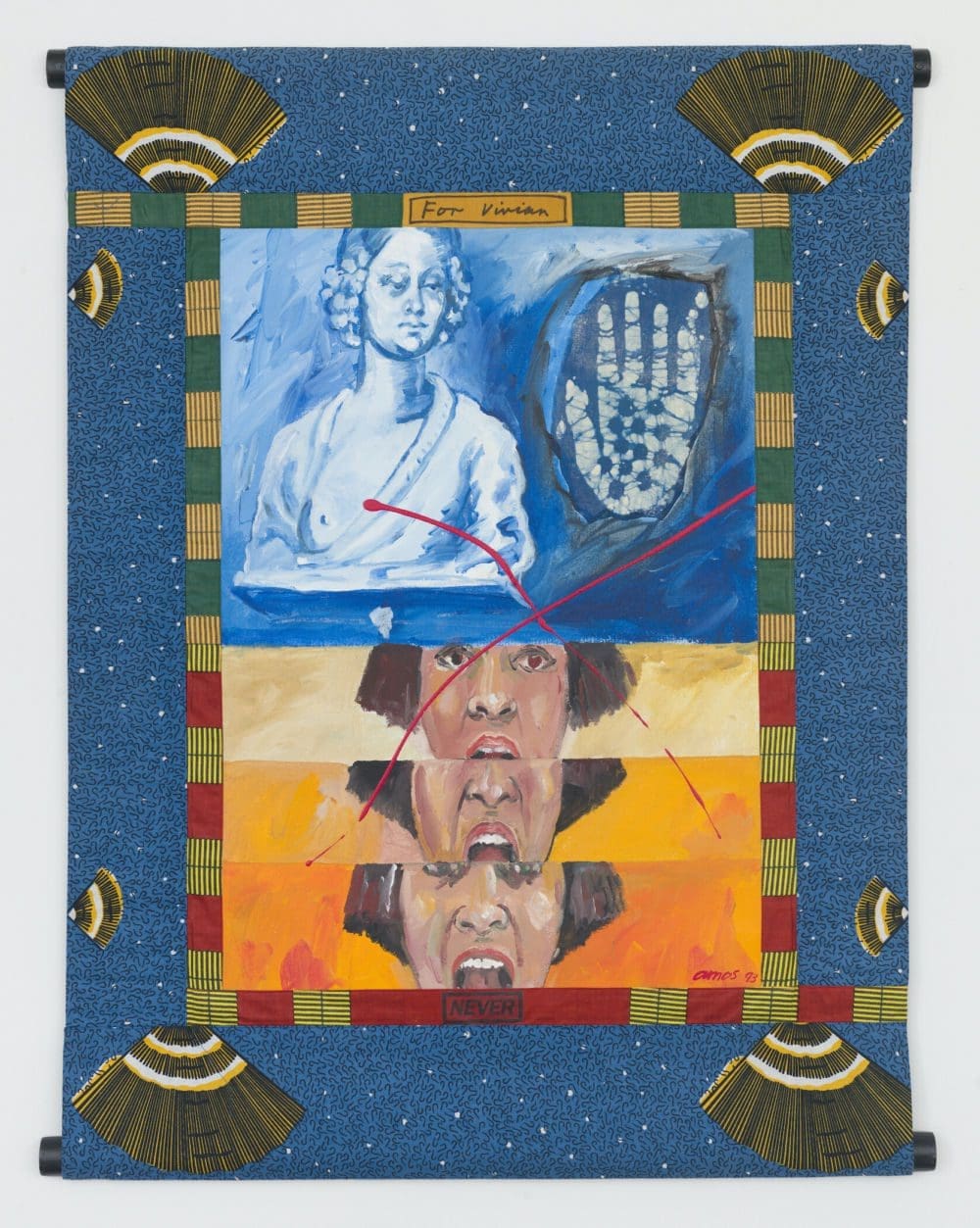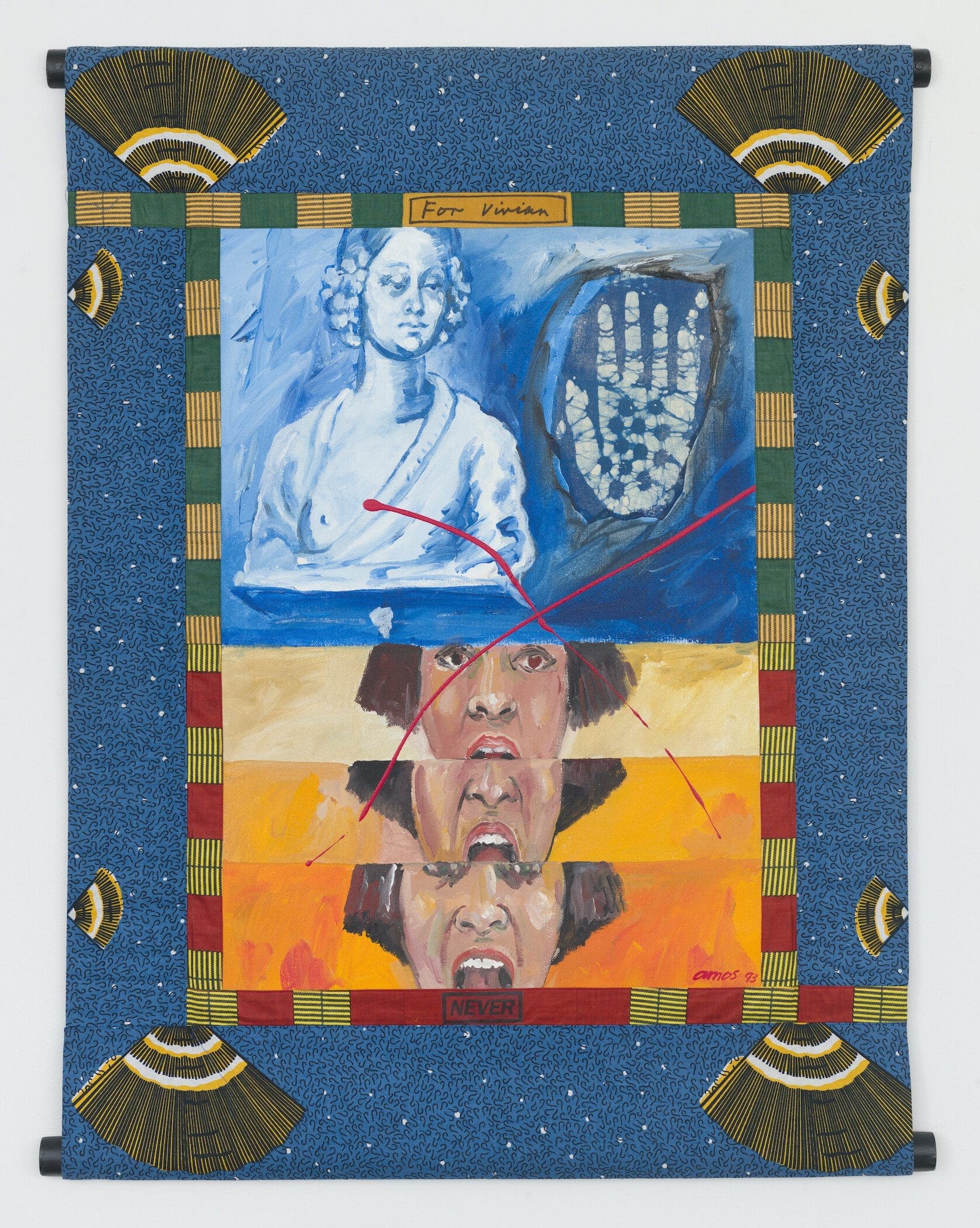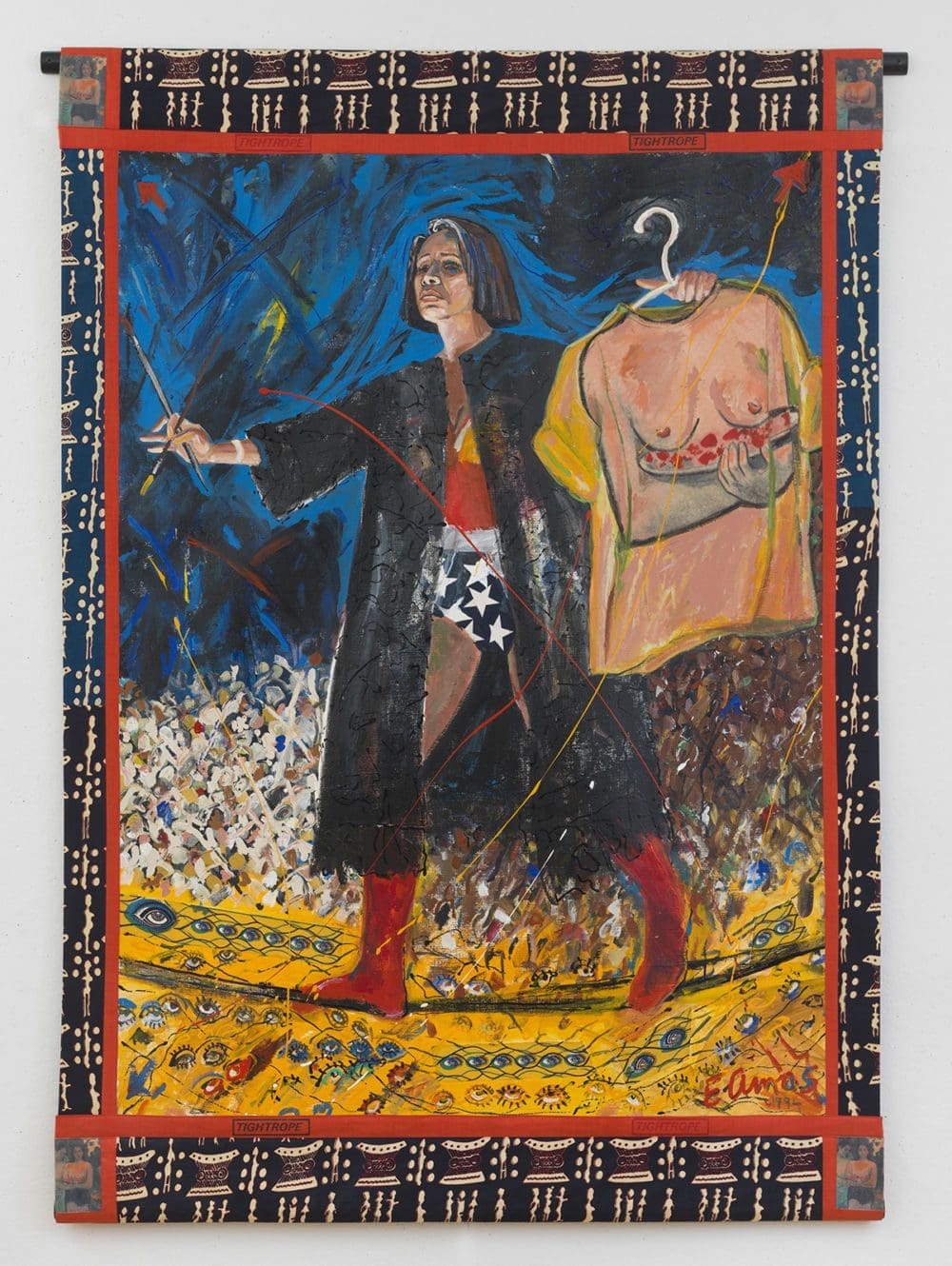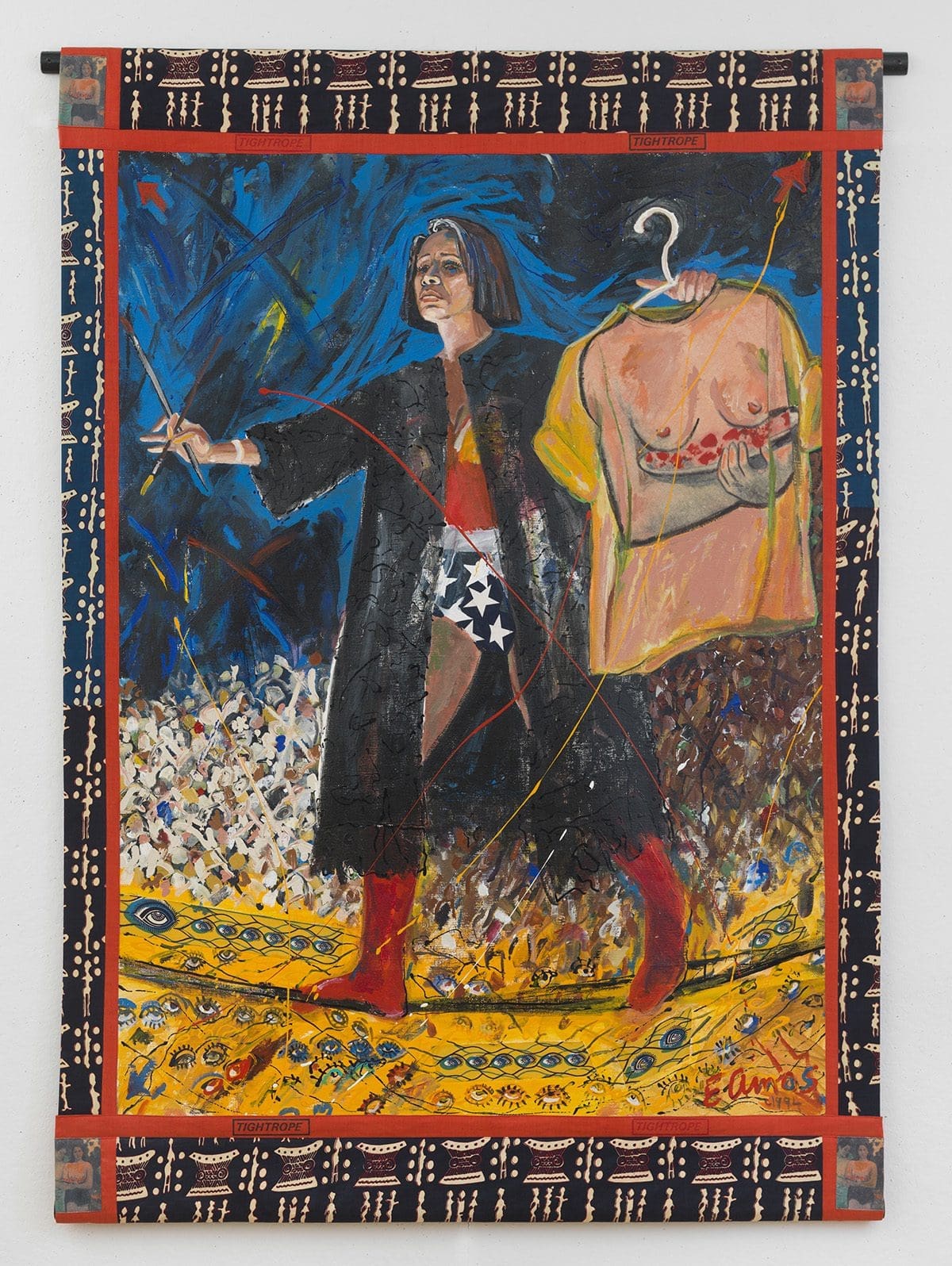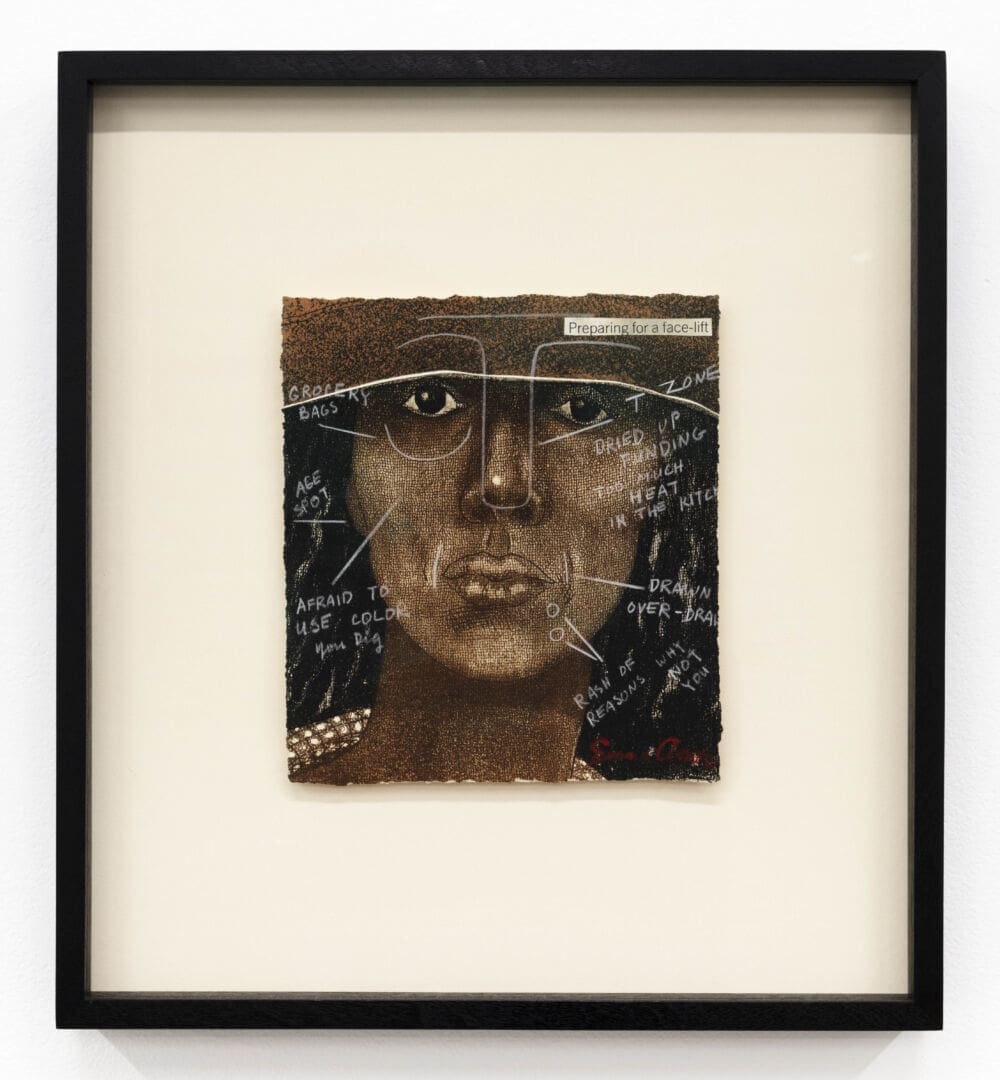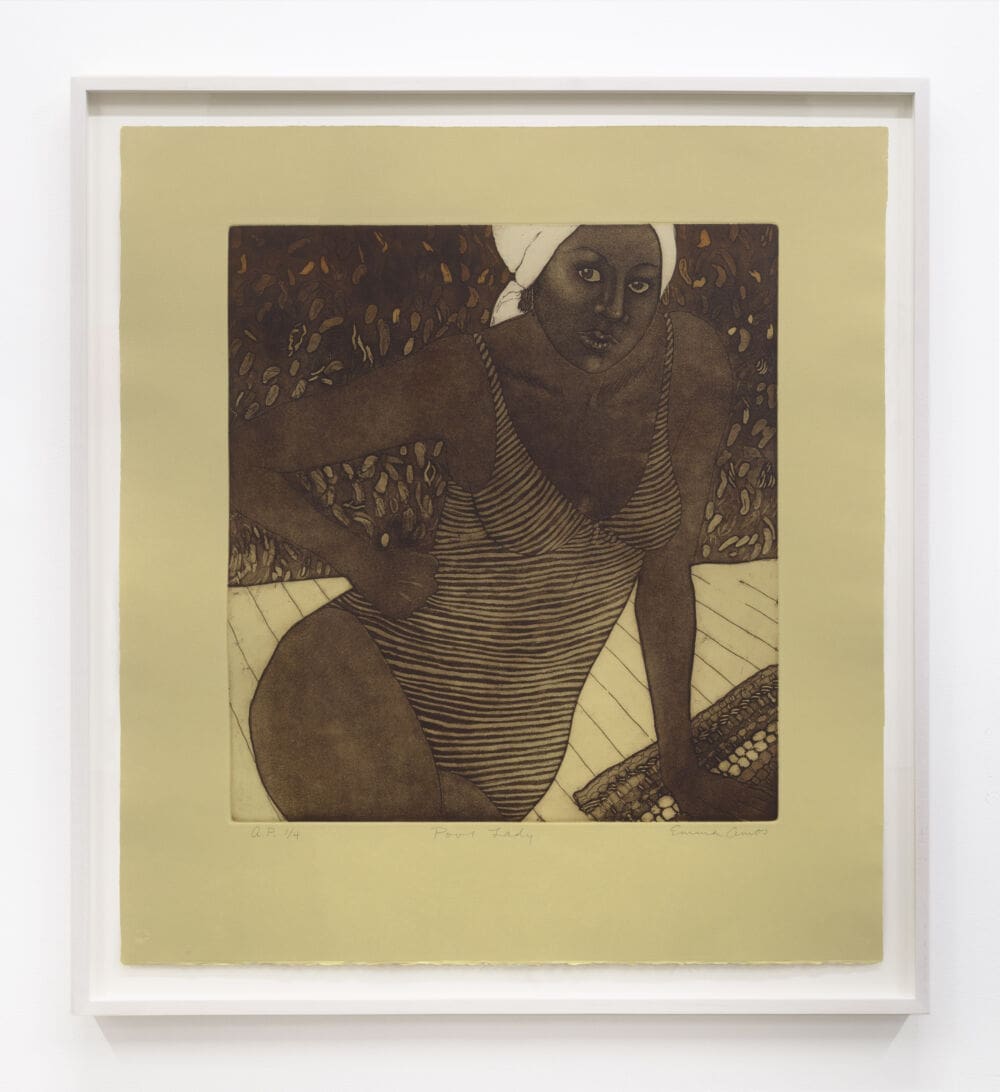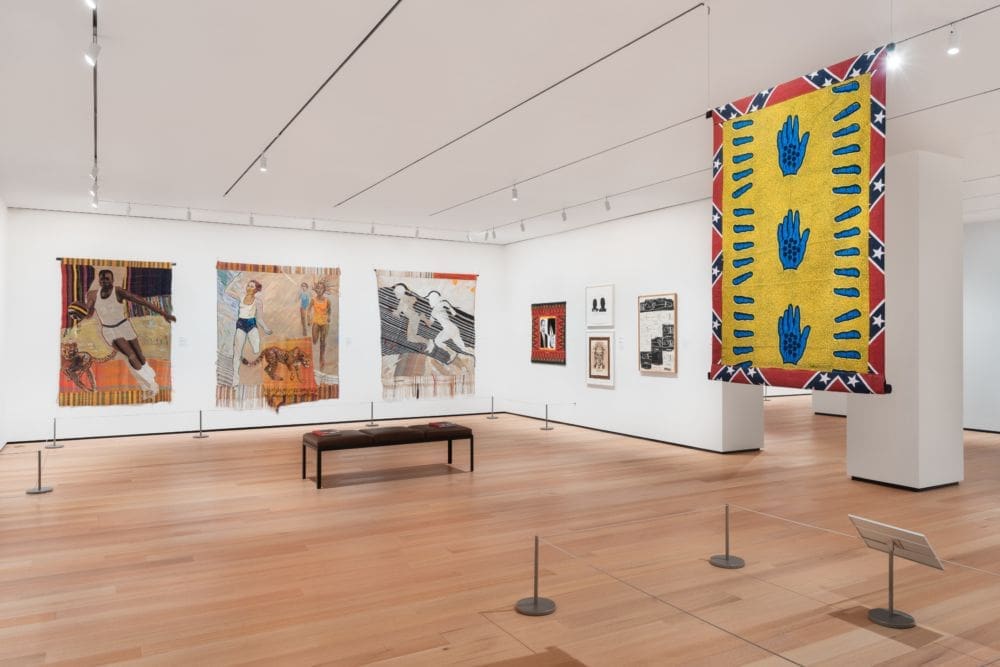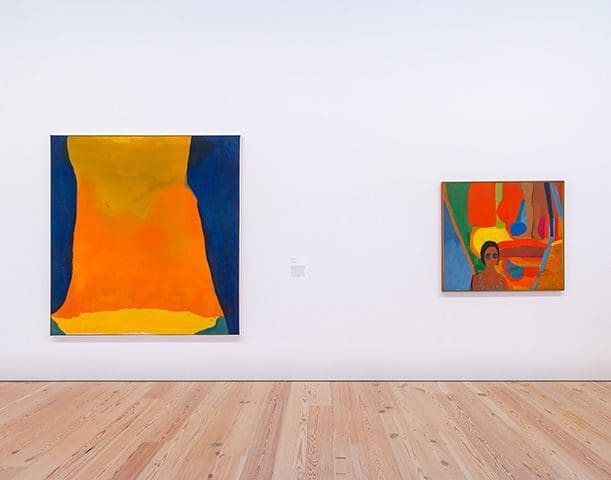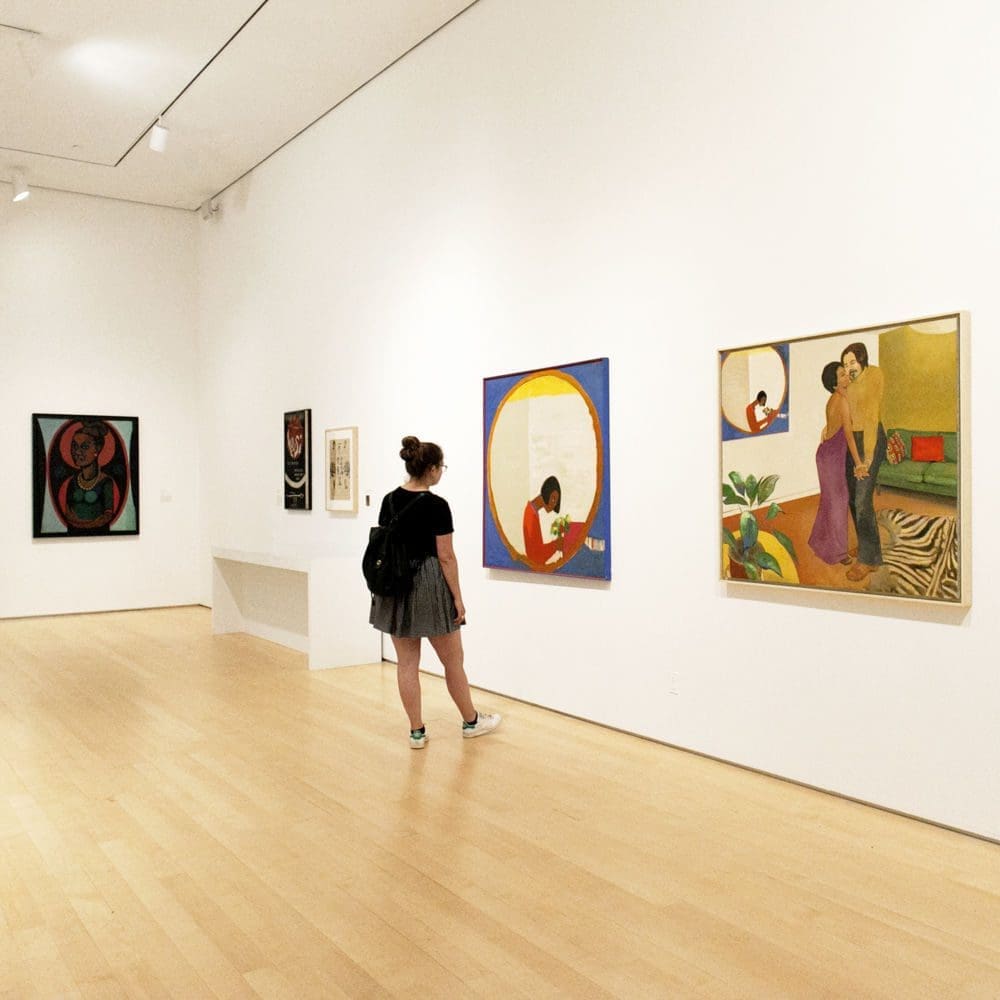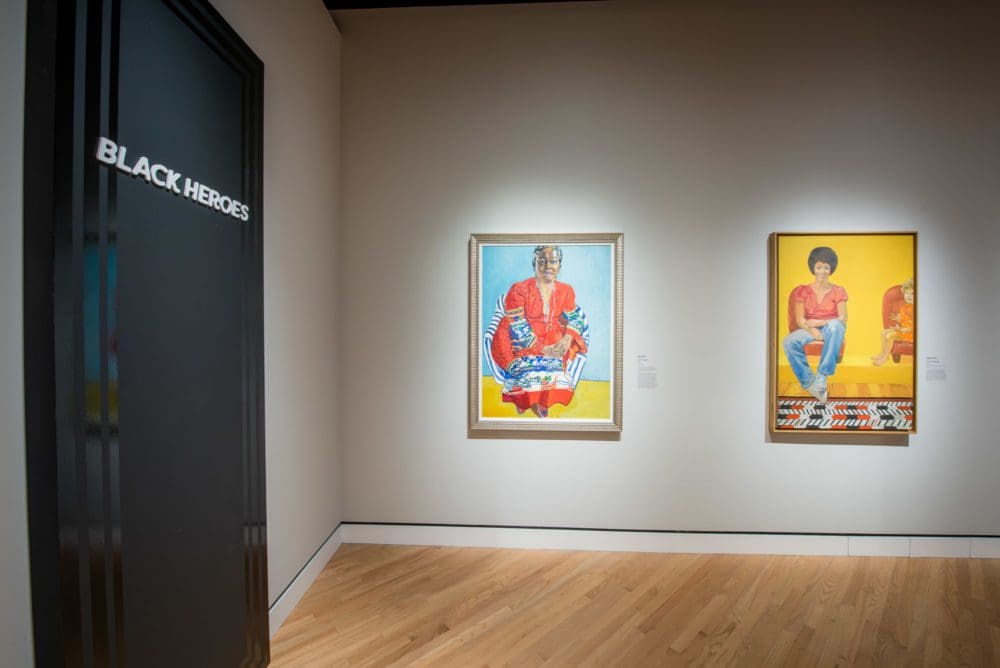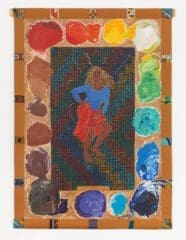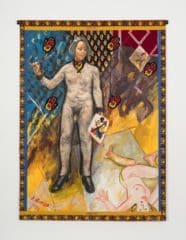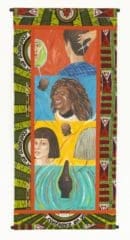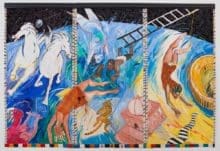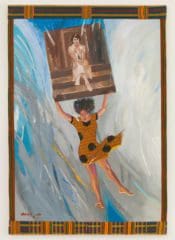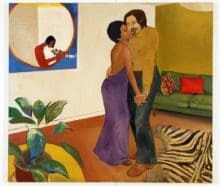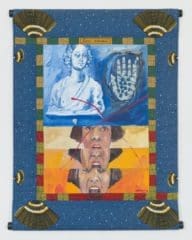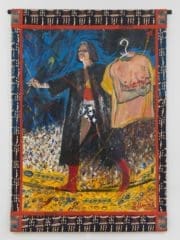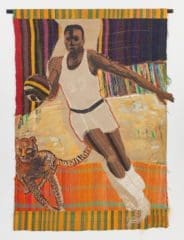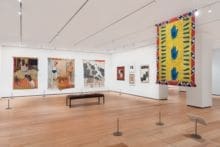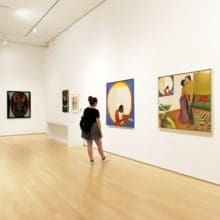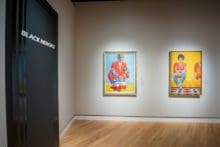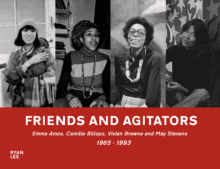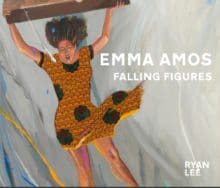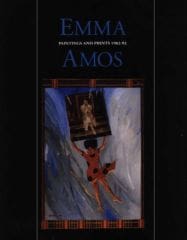Emma Amos
b. 1937 Atlanta, GA – d. 2020 Bedford, NH
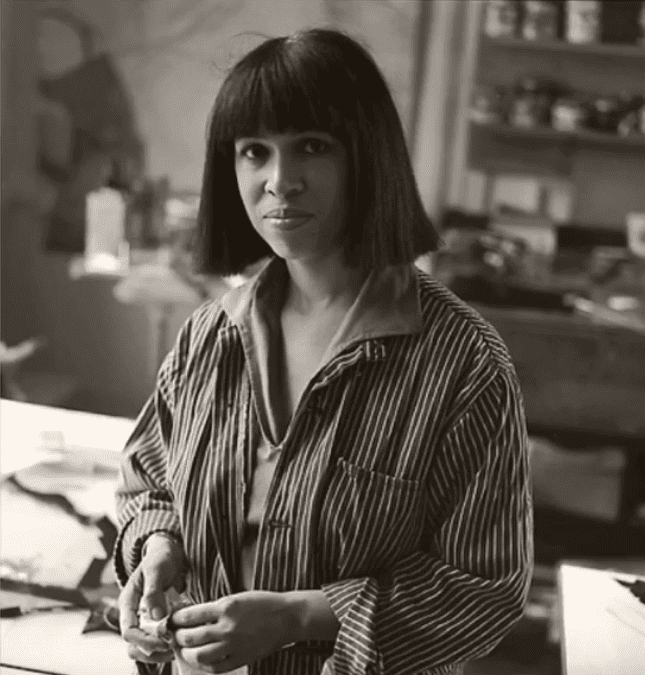
BIOGRAPHY
Emma Amos (b. 1937 Atlanta, GA - d. 2020 Bedford, NH) was a pioneering artist, educator, and activist. A dynamic painter and masterful colorist, her commitment to interrogating the art-historical status quo yielded a body of vibrant and intellectually rigorous work. Influenced by modern Western European art, Abstract Expressionism, the Civil Rights movement and feminism, Amos was drawn to exploring the politics of culture and issues of racism, sexism, and ethnocentrism in her art. “It’s always been my contention,” Amos once said, “that for me, a Black woman artist, to walk into the studio is a political act.”
An artist known for pushing technical and thematic boundaries, Amos unabashedly made art that reflected the experience of Black women, even when such art elicited little to no response from her male peers and critics. She was profoundly influenced by the civil rights and Black movements that pushed for recognition in the art world. Amos became a member of Spiral, an important African-American collective in 1964, but found that the effort for Black representation in the art world often omitted women. She then became involved in various underground feminist collectives, including Heresies from 1982 to 1993, and the trailblazing Guerilla Girls group after its founding in 1985. As one of the few Black members of the Heresies collective, she counted as an important conrtibutor to the publication of the journal’s 1982 issue discussing race within the feminist art movement. Amos’s vivid and powerful paintings are frequently a celebration of the Black body, consistently reminding the viewer, the critic and the art world at large of the undeniably important presence of the Black and female body that has so often been overlooked.
Amos’s early abstract works, strongly influenced by Abstract Expressionism, Pop Art, and Color Field painting, demonstrate an initial interest in experimenting with color and space, resulting in highly coloristic Attitude paintings in the 1960s. In these works, a young Amos, who was only starting her career in New York City, often represented herself in bold and colorful compositions. The carefree nature of these paintings gave way to more mature reflections of Amos’s simultaneous roles as a mother, wife and artist as she built her family in the 1970s. It is while working on these works that Amos introduced her signature figure in flux for the first time. This interest in color and movement, along with a growing social and political engagement gave way to her Athletes and Animals series in the early 1980s. In this series of paintings, Amos considers the beauty and strength of Black athletes and wild animals—a racist comparison used in the past to denigrate Black men and women. Paralleling images of sports players with lions, cheetahs, and crocodiles, she suggests the fleeting and illusory power, both in physicality and influence, of the Black athlete.
Amos’s later Falling series relates specifically to Amos’s own anxieties surrounding the erasure of history, place, and people. Within this series of works, she also considered the economic crisis of the Reagan era and the abyss. She depicted dancers, singers, and other figures slipping, tumbling, and hurtling through abstracted spaces among iconic and classic architecture, mythological motifs, and symbols of jazz and blues music, as a way to process her own social and personal anxieties.
The American and Confederate flags frequently appear within Amos’s oeuvre, which reflects upon the conceptual and historical significance of the nationalistic, communitarian, and racist nature of these symbols within society and Amos’s own lived experience. The ‘x’ of the Confederacy slashes across many of her 1990s works. In much of her mid-career and later works, Amos made use of traditional African fabric as borders for her compositions. An accomplished weaver, she also included collages of her own weaving in her paintings, thus purposefully blurring the gendered lines between crafts and the fine arts. She continued this practice throughout the rest of her career. The vivid works that Amos produced in the 2000s are a culmination of the lasting importance of her deep and lifelong passion for color, activism and technical innovation.
Born in segregated Atlanta, GA, Amos graduated from Antioch College in Ohio in 1958 and went on to study at the Central School of Art in London. Upon finishing her studies in England, Amos moved to New York City. Though she eventually became active in the downtown arts scene, working alongside prominent artists such as Romare Bearden, Hale Woodruff, Norman Lewis, Alvin Hollingsworth and Charles Alston, Amos struggled to find her footing in the city, finding that considerable obstacles were drawn up against her because of her age, gender and race. She earned her Masters in Arts from New York University in 1965 and went on to teach art at the Dalton School in New York. In 1980, she became a professor and later chair of the Visual Arts department at the Mason Gross School of Art at Rutgers University. She taught there for 28 years.
In 2016, Amos received the Georgia Museum of Art’s Larry D. and Brenda A. Thompson award and was honored by the Studio Museum in Harlem as an Icon and Trailblazer, along with Faith Ringgold and Lorraine O’Grady.
In 2021, Emma Amos: Color Odyssey, a landmark retrospective of Amos’s career, traveled from the Georgia Museum of Art to the Munson Museum, NY and Philadelphia Museum of Art, PA. She has also been included in exhibitions at the Smithsonian American Art Museum, DC (2024); Whitney Museum of American Art, NY (2024); SFMOMA, CA (2024); Saint Louis Art Museum, MO (2024); British Museum, UK (2023); Brooklyn Museum, NY (2023); Blanton Museum of Art, TX (2023); Pinacoteca de São Paulo, Brazil (2022); Modern Art Museum at Fort Worth, TX (2022); Museum of Contemporary Art, Los Angeles, CA (2019); Minneapolis Institute of Art, MN (2019); National Portrait Gallery, UK (2018); de Young Museum, CA (2017); Whitney Museum of American Art (2017); Tate Modern, UK (2017); and Musée du Quai Branly, France (2016), among others.
Her work is held in over 40 museum collections, including the Baltimore Museum of Art, MD; Bass Museum of Art, FL; Birmingham Museum of Art; British Museum, UK; Brooklyn Museum, NY; Detroit Institute of Arts, MI; James F. Byrnes Institute, Germany; Museo de las Artes, Mexico; Metropolitan Museum of Art, NY; Minneapolis Institute of Art, MN; Museum of Modern Art, NY; National Gallery of Art, DC; Newark Museum, NJ; Studio Museum in Harlem, NY; Whitney Museum of American Art, NY; and Yale University Art Gallery, CT, among others.
